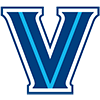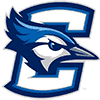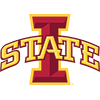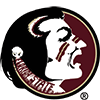This article is part of our NCAA Tournament Preview series.
Nick Whalen and James Anderson go region-by-region to break down 25 of the top prospects in the 2017 NBA Draft.
EAST REGION
 Josh Hart, G, Villanova
Josh Hart, G, Villanova
Projected range: Second roundWhalen: Hart is one of the five best college basketball players in the nation, but as somewhat of a late-bloomer he's viewed as a low-upside pro prospect. The senior has prototypical size (6'6") for an NBA shooting guard and is a better athlete than he's given credit for, but barring a monster run through the Tournament, Hart will likely hear his name early in Round 2 on draft night.
 Johnathan Motley, F, Baylor
Johnathan Motley, F, Baylor
Projected range: Late first round Whalen: Motley has emerged as one of the best all-around forwards in the nation, averaging 17.3 points, 9.9 rebounds, 2.4 assists and 1.0 blocks per game while leading Baylor to a three-seed in the East. An excellent athlete with a 7'3.5" wingspan, Motley has the look of a modern NBA four, and his ceiling as a prospect may ultimately be determined by his ability to improve as an outside shooter (26% 3PT).
 Jayson Tatum, F, Duke
Jayson Tatum, F, Duke
Projected range: Top fiveWhalen: Tatum was going to be a lottery pick from the moment he arrived in Durham, but his stock is higher than ever after leading the Blue Devils to the ACC Tournament crown. During that four-game run, Tatum averaged 22.0 points and 7.5 rebounds while shooting 55 percent from the floor. In most drafts, he'd be the favorite to go No. 1 overall. While Washington's Markelle Fultz is still the consensus top pick, Tatum could very well solidify himself as the draft's best wing prospect over Josh Jackson by the time we get to April.
 Luke Kennard, G, Duke
Luke Kennard, G, Duke
Projected range: Mid-to-late first roundWhalen: Despite coming to Duke as one of the most decorated high school players in the history of Ohio, Kennard has probably exceeded expectations, playing himself into the post-lottery conversation after two exceptional seasons. A polished scorer and savvy playmaker, Kennard was a First Team All-ACC performer as a sophomore, supplanting Grayson Allen as Duke's best offensive player. Outside shooting (44% 3PT) will be Kennard's calling card at the NBA level, but he's a more diverse scorer than his appearance belies.
 Harry Giles, F, Duke
Harry Giles, F, Duke
Projected range: Late first roundWhalen: It's not often that the No. 1 recruit in his class is one of the draft's biggest mysteries, but that's where we're at with Giles. With three knee surgeries under his belt before playing a single college game, it's unfair to judge Giles on the same scale as other top prospects, but he's yet to show more than a handful of flashes of the potential that made him a consensus top-3 pick less than a calendar year ago. The fact that Giles -- averaging just 4.3 points and 4.0 rebounds and struggling to stay on the floor, at times -- is still a likely first-rounder speaks volumes about the type of elite talent he was at the high school level. That talent hasn't gone anywhere, but it'll be up to Giles to prove he's healthy enough to warrant a first-round selection. It's improbable, but if he can string together a few impressive games in the Tournament, Giles will inevitably be back in the late-lottery conversation.
MIDWEST REGION
 Josh Jackson, F, Kansas
Josh Jackson, F, Kansas
Projected range: Top fiveAnderson: The best two-way NBA prospect in the country, Jackson's elite athleticism, length (6'8", 6'10" wingspan) and school garner comparisons to Andrew Wiggins. However, unlike Wiggins, Jackson has the motor to put his talents to use on the defensive end and is a willing, skilled passer -- often acting as an offensive hub in the high post. Kansas fizzled out in the Big 12 tournament without Jackson, who was suspended for a traffic incident. While Frank Mason is the Jayhawks' primary creator and ball-handler, Jackson might be the Jayhawks' most important player because of his versatility on both ends.
 Frank Mason, G, Kansas
Frank Mason, G, Kansas
Projected range: Second roundWhalen: One of five players with the best odds to take home the Tournament MOP award, Mason has been among the two or three best players in the country as a senior. As a college point guard, the Big 12 Player of the Year is the total package, averaging 20.8 points, 5.1 assists, 4.1 rebounds and 1.3 steals per game, while hitting 49 percent of his three-point attempts. However, at just 5'11" with average length and athleticism, Mason is the prototypical elite college player/middling NBA prospect, following in the footsteps of Yogi Ferrell, Scottie Reynolds, and Sherron Collins, to name a few (shoutout Dee Brown). Mason's productivity should be enough to earn him some hard looks in Round 2, and the recent success of Ferrell, who went undrafted in 2016, could give him a minor boost.
 Miles Bridges, F, Michigan State
Miles Bridges, F, Michigan State
Projected range: Late lotteryWhalen: Easily the best freshman in a down year for the Big Ten, Bridges capped off the conference season by scoring at least 15 points in 14 of his final 16 games. While he can get too three-point-happy at times, Bridges converted nearly 39 percent of his 5.2 looks per game from beyond the arc, showing scouts that he can be more than just a jaw-dropping athlete on the wing. In terms of explosiveness and raw skill, Bridges is a top-10 prospect. But at 6'7" he's the definition of a tweener, and the concern is that he'll struggle to find a position at the pro level.
 Caleb Swanigan, F, Purdue
Caleb Swanigan, F, Purdue
Projected range: Late first/early second roundWhalen: By now, you're probably familiar with the scouting report on the consensus Big Ten Player of the Year. One of the most physical prospects in the draft, Swanigan dominated the Big Ten, averaging 18.5 points, 12.6 rebounds and 2.9 assists per game while notching a double-double in 27 of 32 contests. While he's a considerably better floor-spacer than he's given credit for (43% 3PT), Swanigan is an average athlete with a throwback style better suited for the mid-90s NBA. He'll still be an effective pro but is most likely destined for a long career as a first or second big man off the bench.
 Justin Patton, F/C, Creighton
Justin Patton, F/C, Creighton
Projected range: Mid first roundAnderson: Patton is essentially a competitive, more agile John Henson type. He is excellent at running the floor, and he moves more like a wing than a center. He could stand to add 20 pounds of muscle, but his ability to space the floor and protect the rim should have him in the mix for the lottery when June arrives. He has a chance to be a two-way center who can also step out and shoot threes, and players like that are incredibly hard to find.
 Jawun Evans, PG, Oklahoma State
Jawun Evans, PG, Oklahoma State
Projected range: Late first/early second roundWhalen: The Cowboys snuck into the Tournament as a 10 seed, but Evans is the reason they're a darkhorse pick to make the Sweet 16. The catalyst behind the country's most efficient offense, Evans averages 19.0 points, 6.2 assists and 3.3 rebounds per game, while ranking second in the country in assist rate and hitting 38 percent of his three-point attempts. At 6'1" with elite vision and handles, Evans draws comparisons to Chris Paul, and while he's unlikely to have that kind of instant impact at the NBA level, he could be a major steal later in the draft for a team looking to groom a potential future-starter.
 Donavan Mitchell, G, Louisville
Donavan Mitchell, G, Louisville
Projected range: Mid-to-late first roundWhalen: The star of one of the nation's best two-way teams, Mitchell is a true two-guard with the size (6'3") of an NBA point guard. He's a much better prospect than both Russ Smith and Peyton Siva were coming out of Louisville, but Mitchell is unlikely to reach lottery territory in a talent-rich guard class. That said, he has the physical tools, (much-improved) outside shooting ability, and defensive chops to be an impact swing guard in the mold of a Patrick Beverley.
 Monte Morris, PG, Iowa State
Monte Morris, PG, Iowa State
Projected range: Second roundWhalen: Over the weekend, Morris capped off one of the best four-year careers by a point guard in Big 12 history, leading the Cyclones to the conference tournament title with a win over West Virginia. The senior is arguably the best true point guard in the country and the owner of a ridiculous 6:1 assist-to-turnover ratio on the season. He's on his way to setting the NCAA career record in that category, but the 6'3" Morris is more than just a gifted passer. He leads the Cyclones in scoring (16.3 per game) and steals (1.8) and ranks second only to star forward Deonte Burton in rebounding (4.8). Like Jawun Evans, Morris' stock is hurt by the depth of elite point guard prospects at the top of the 2017 class. Plus, as a senior who turns 22 a few days after the draft, he'll inherently carry the "lower ceiling" label.
 Dillon Brooks, G/F, Oregon
Dillon Brooks, G/F, Oregon
Projected range: Second roundWhalen: Brooks got off to a slow start after undergoing offseason foot surgery, but he's been back to his old self over the last two months, averaging just under 20 points over his last 14 games. While he's one of the best scorers and clutch players in college basketball, Brooks isn't an elite playmaker, and his rebounding from the wing comes and goes. The Ducks successfully utilize Brooks as a combo forward, but that won't fly at the pro level, as his height (6'6") and underwhelming wingspan (6'4.5") forecast him as a shooting guard. Brooks' production and talent will be enough to get him drafted, but his future in the NBA is rather uncertain.
WEST REGION
 Zach Collins, C, Gonzaga
Zach Collins, C, Gonzaga
Projected range: Mid-to-late first roundWhalen: Opinions on Collins range from late-lottery to somewhere in the second round, and at this point the freshman hasn't indicated if he'll even test the draft waters. If he leaves, he'd be Gonzaga's first ever one-and-done, but he's unlikely to declare unless he can solidify himself as a top-20 prospect. Collins is arguably the third or fourth-best player on his own team -- he averages just 17.1 minutes per game -- but as a true seven-footer with a soft touch, strong defensive skills and range extending beyond the three-point line, he's close to the complete package for a modern NBA center.
 Melo Trimble, G, Maryland
Melo Trimble, G, Maryland
Projected range: Second roundWhalen: Had Trimble left school after his stellar freshman season in 2014-15, he may have been a lottery pick. Instead, he opted to return to school in hopes of leading a loaded Maryland team to the Final Four. Not only did the Terps bow out in the Sweet 16, but Trimble's game appeared to regress, due in part to some nagging injuries. With essentially no choice but to return to school to rehab his stock, Trimble put together a strong junior campaign, averaging 17.0 points, 3.7 assists and 3.7 rebounds while shooting 44 percent from the floor. In order to ascend beyond the mid-second-round, however, Trimble will need to convince scouts he's closer to the three-point shooter he was as a freshman (41.2% 3PT), rather than as a sophomore or junior (combined 32% 3PT).
 Jonathan Isaac, F, Florida State
Jonathan Isaac, F, Florida State
Projected range: Early lotteryAnderson: Isaac has been a critical ingredient to Florida State's success this season, averaging over a steal and a block per game while shooting 50 percent from the field, 35 percent from three-point range and 80 percent from the free throw line, all while standing 6'11" with a 7'1" wingspan. While his future in the NBA will hinge on him continuing to stretch the floor at a solid clip for his size, he currently excels at finishing lobs in the halfcourt and protecting the rim while also guarding the opposition's top wing scorer. Isaac isn't as polished as Jackson or Tatum at this point, but his ceiling is just as high.
 Lauri Markkanen, F, Arizona
Lauri Markkanen, F, Arizona
Projected range: LotteryAnderson: Perhaps the most efficient shooter among the projected lottery picks, Markkanen will be a prototypical stretch four at the next level. He moves well for a seven-foote, but is not an elite athlete. He shot 43 percent from beyond the arc and 82 percent from the charity stripe, showcasing the type of skill and efficiency typically associated with upperclassmen. When he is not scoring, Markkanen has a hard time impacting the game. While he's averaging 15.6 points per game, he appeared to hit a wall midway through Pac 12 play, accounting for 11 or fewer points in eight of his last 12 games.
SOUTH REGION
 Justin Jackson, G, North Carolina
Justin Jackson, G, North Carolina
Projected range: Mid first roundWhalen: This time last year, Jackson was considered a borderline-first-round pick, so it's a testament to his overall improvement that he's crept his way up toward the middle of Round 1. The Player of the Year in the most competitive conference in America, Jackson averaged 18.1 points, 4.6 rebounds and 2.7 assists while hitting 38 percent of his threes, up nearly 10 percentage points over last season. Making that leap as shooter is what's most helped Jackson's stock, as he's always had excellent size (6'8") and athleticism for an NBA two-guard, though he'll eventually need to bulk up. While Jackson may not have the elite tools to be an All-Star in the NBA, he has the makings of an above-average starting shooting guard.
 Isaiah Hicks, F, North Carolina
Isaiah Hicks, F, North Carolina
Projected range: Second roundWhalen: Freshman Tony Bradley is the most talented big man on the Tar Heels' roster, but Hicks has gradually developed into a solid, second-round prospect with the athleticism and soft touch in the paint that any team could use in a backup big. The senior, who turns 23 in July, plays only 23.4 minutes per game and doesn't get a ton of touches, and he'll almost certainly need to develop a rangier jumper if he's going to stick in the NBA.
 Lonzo Ball, G, UCLA
Lonzo Ball, G, UCLA
Projected range: Top fiveWhalen: A finalist for nearly every major individual award, Ball might not have been the best player in the country this season, but he was perhaps the most impactful. With the help of fellow-freshman T.J. Leaf and a rejuvenated supporting cast, the 6'6" Ball elevated UCLA back to national prominence, leading the country in assists and commanding the one of the most entertaining offenses in recent memory. Ball isn't a flawless prospect, but he has the potential to be a perennial All-Star at the NBA level, and he'll undoubtedly go down as of the more indelible college stars of the last decade.
 TJ Leaf, F, UCLA
TJ Leaf, F, UCLA
Projected range: Mid-to-late first roundWhalen: Ball has received most of the hype, but Leaf has been another vital piece in the Bruins' turnaround. Though he was a five-star recruit and a McDonald's All-American, Leaf wasn't pegged by most as a potential one-and-done, but his all-around ability has forced him into the conversation as high as the late-lottery. One of the most well-rounded freshmen in the country, Leaf holds averages of 16.2 points, 8.3 rebounds and 2.6 assists per game while shooting 62 percent from the field. The 6'10" freshman is already a knockdown three-point shooter (45% 3PT) and has the athleticism and fluidity to hang with quicker fours at the NBA level. Projecting Leaf's ceiling is difficult -- he's undoubtedly benefited from playing alongside Ball in UCLA's fast-paced system -- but he's the type of plug-and-play prospect just about any team would like to get its hands on in the middle of Round 1.
 Malik Monk, F, Kentucky
Malik Monk, F, Kentucky
Projected range: LotteryAnderson: Casual college basketball fans will know Monk's name from the time he dropped 47 points on North Carolina earlier this season on a neutral court. He also dropped 30-plus points on three other occasions en route to being named the SEC Player of the Year. Monk is a terrific athlete, but his long-range shooting is his calling card. Like most volume shooters, he is awfully streaky, and he shot just 32.6 percent from the field over his final four games. When his shot is not falling, it is hard for Monk to make a positive impact, as he doesn't rebound (2.5 per game) or set up his teammates much (2.4 assists per game). He also fails to really put his athleticism and quickness to work on the defensive end, averaging just one steal and 0.4 blocks in 32.1 minutes per game.
 Bam Adebayo, F, Kentucky
Bam Adebayo, F, Kentucky
Projected range: Mid-to-late first roundWhalen: This year's version of the Wildcats are a guard-dominant group, with De'Aaron Fox, Malik Monk and Isaiah Briscoe each averaging at least 12.6 points per game. Adebayo is the only other player in double-figures, accounting for 13.3 points per game and leading the team with 7.8 rebounds per game. From a physical standpoint, he's as imposing a 19-year-old as you'll find. However, Adebayo has struggled, at times, to harness his size (6'10", 260 lbs) and athleticism (39.5" max vertical). The freshman plays hard and can eat smaller defenders alive inside, but he's unpolished offensively, and the number of jump shots he's attempted this season can be counted on two hands. Adebayo's bully-ball style won't work nearly as well in the NBA, so refining his interior repertoire will be a must if he's going to be more than a hyper-athletic lob-catcher. Those skills could certainly develop as he gains experience, and it's tough to imagine Adebayo falling outside of the top 20-25 picks based on physical potential alone.
 De'Aaron Fox, G, Kentucky
De'Aaron Fox, G, Kentucky
Projected range: LotteryAnderson: From a size (6'4", 171 pounds) and speed standpoint, Fox is very comparable to John Wall. The comparisons don't end there, as Fox's biggest flaw is his horrid three-point shooting efficiency (24.2 percent), but even Wall shot 32.5 percent from beyond the arc as a freshman at Kentucky, so Fox is truly a rare breed among lottery-bound point guards. Despite that deficiency, Fox was Kentucky's most reliable player this season, running a fast-paced offense while rebounding well for his position (4.1 rebounds per game). When Malik Monk's shot is off, the Wildcats rely on Fox to create shots in the halfcourt and turn defense into transition offense.













